Home » Uncategorized (Page 8)
Category Archives: Uncategorized
National Geographic Out of Eden Walk
Tiffany Imparato
This week I had the pleasure to explore a very exciting project conducted by National Geographic. The project termed the Out of Eden Walk is a truly amazing journey by Paul Salopek that follows the journey of those whom migrated from Africa back in the stone age. He follows the very journey of migration that happened so long ago and inspires his viewers through his adventure. Along the journey he includes photos, stories, audio, and videos that document everything along the long way. He documents the landscape of his monumental journey along with those that he encounters and the stories they have to tell as well. Through telling their stories he gives a voice to the silent on a global level. Paul traveled around 24,000 miles and it took close to a decade I must admit I don’t think I would survive past the first month but thankfully I can experience it without leaving my home.

The entire journey of the project is very welly documented and users have free access to an interactive recount of the experience. As a future educator I think that this would be an amazing tool to use in my future classroom. The journey covers history, geography, encourages global citizenship, and teaches students about various cultures. Each interactive section of the voyage includes an array of information, photos, videos, and real-life encounters. The trip was so welly documented it gives the viewer a truly immersive experience that makes you believe you are walking right there with Paul. I think that this type of interactive tool could really get students excited to explore the walk and that they will find themselves lost in the exploration as well. I have decided to cover three sections of the voyage to explore and help you understand how remarkable this entire project is.
The first section I choose was Paul’s journey out of Africa where it all began in January of 2013.
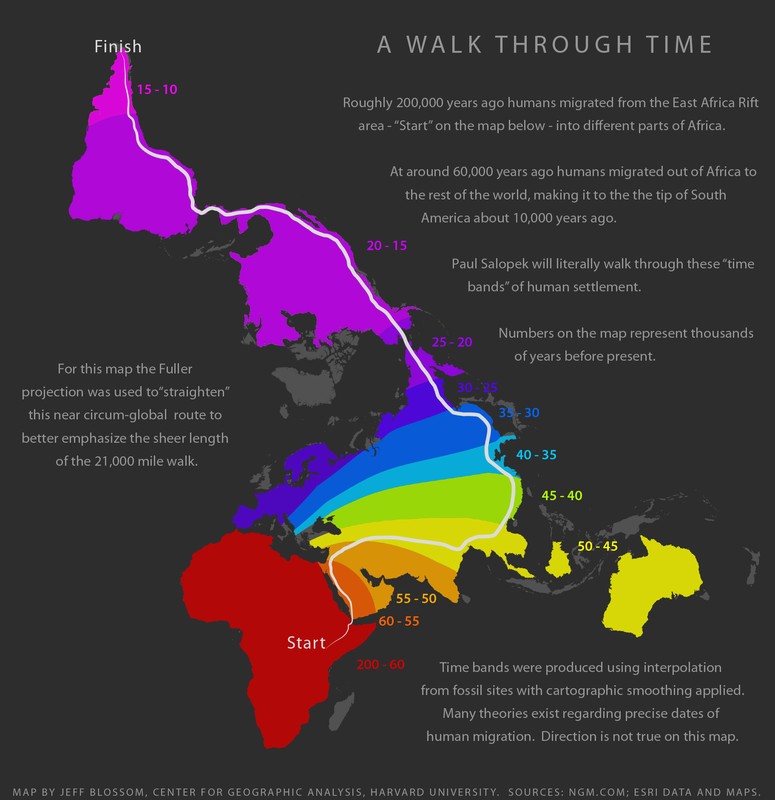
Paul began his journey in Ethiopia which I am a bit jealous of because I have always wanted to explore the culture and countryside there. Ethiopia is a land that is deeply embedded within their culture. On January 21, 2013 he set out on this amazing migration journey in Herto Bouri, Ethiopia along with his guide Alema Hessan.
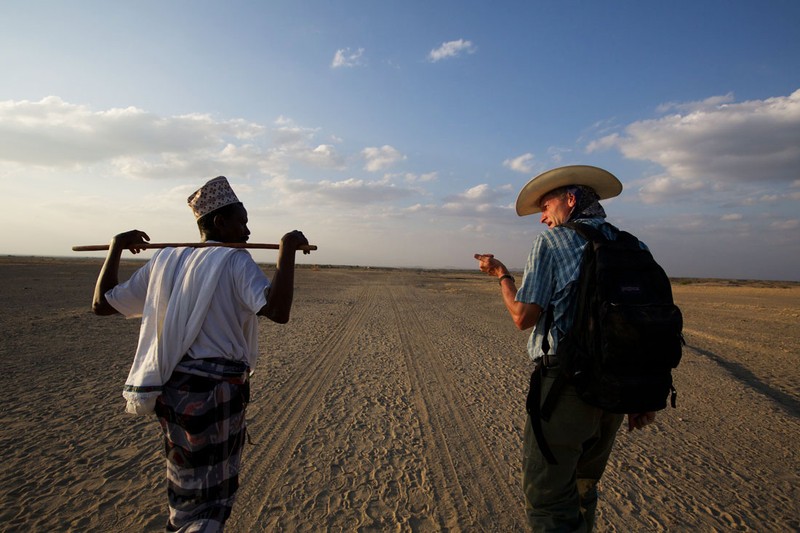
In the beginning of their trek, they lead a caravan of camels toward the Indian Ocean following their nomad voyages that walked before them. The aera that they are walking has some of the world’s oldest fossils from humans just below their feet. I would imagine it must be a humbling experience to walk the same route of so many. During their way through this vast countryside, they walk through the Rift Valley which is compared to a natural highway. With water being scarce they come across hand dug wells that provide a much-needed source for them.
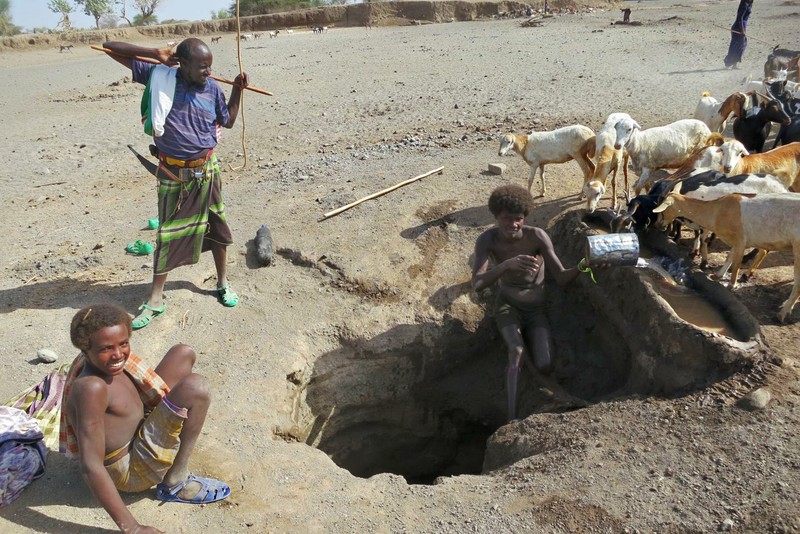
This is a humbling moment because sitting here in my comfortable house water is something I take for granted every day. The people that live and travel through this desert area rely heavily on the use of these hand dung wells.
The first aera I decided to explore Afar Badlands, Ethiopia
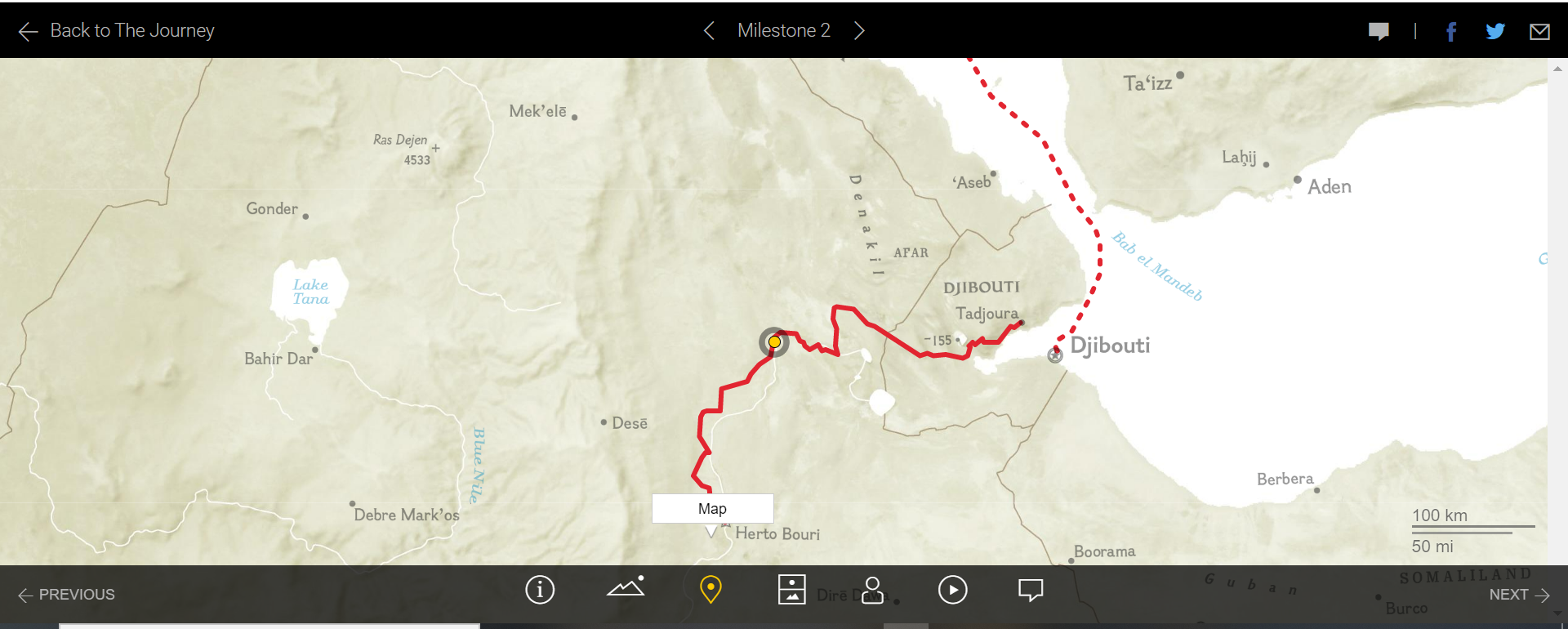
By day 19 they have reached a huge milestone of traveling 100 miles and enter into the Afar Badlands; I cannot imagine walking 100 miles. One very neat function of the tool is the Earth & Sky tool that allows you to view two images at the milestone destination. This would be exciting for students to get a real feel of what would be surrounding them if they were standing in that very spot. The contrast of the rough terrain below his feet and the rich blue sky above it magical.
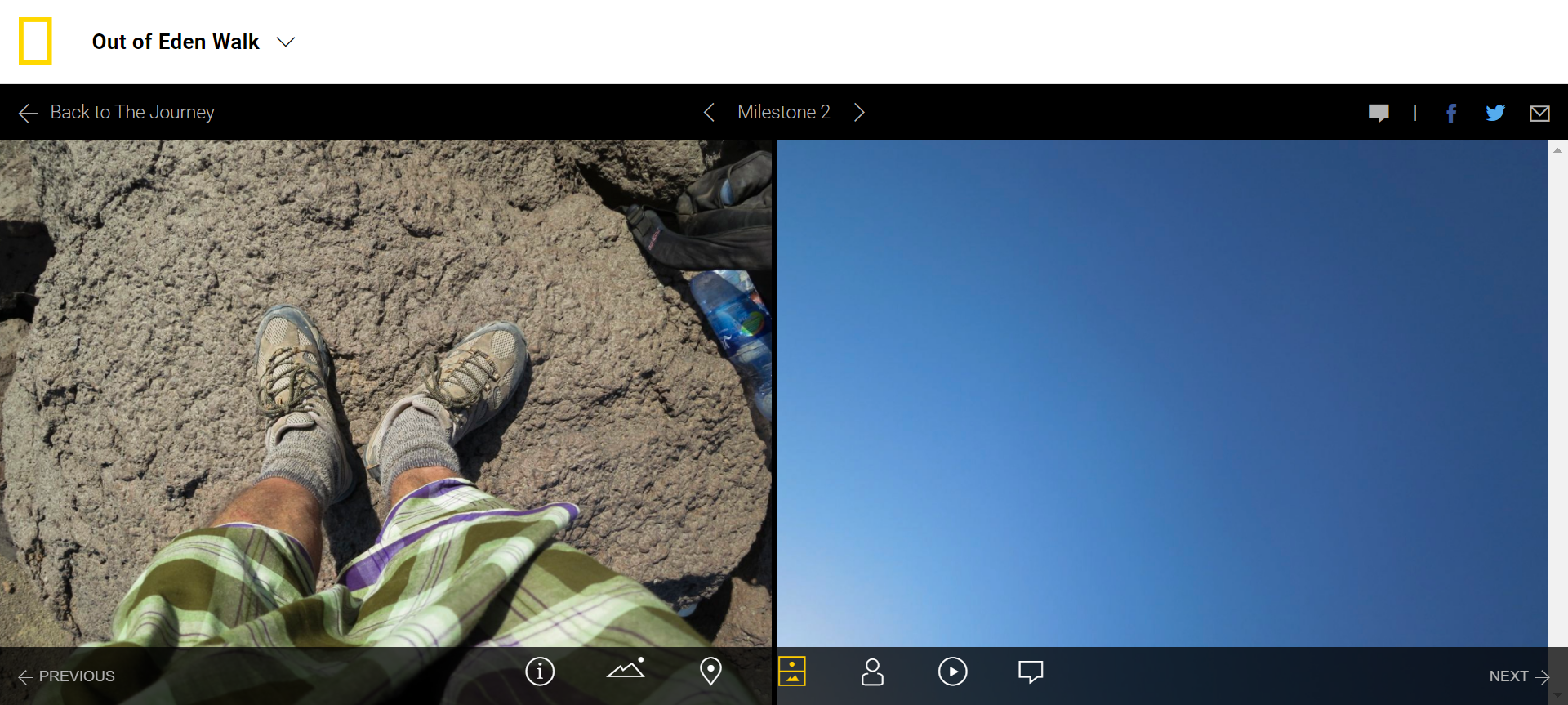
Another great feature of this tool is what they call glances that are videos that help you feel as though you are part of the journey. In this video we see the camels on their path right alongside a highway. For me this was also as the past meets the current society. The camels are a vital measure for this epic journey as they are carrying what the group needs for survival including food, water, and medical supplies.
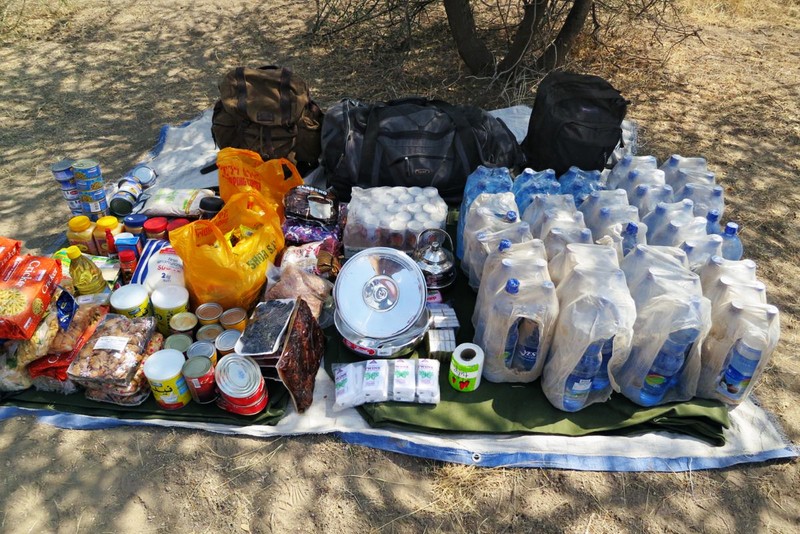
Seeing the means of travel via walking/ camel caravan is a good representation to make students apricate what great lengths the original people took. It is a great way to get students to think about life outside of what they know and help guide them to global citizenship. I think it could be helpful to challenge students to think about how people used to travel and how people live in regions that are far less industrialized. I think it could be helpful to open students minds and encourage them to empathize with those that have less available resources to them.
The second aera I selected to explore is Mile Stone 11: Near Dahaban, Saudi Arabia.

At this point the travelers have journeyed 1,000 miles and 136 days and it is now August. They have encountered many more obstructions such as farms, fenced aeras, factories, and subdivisions; obviously during the original route these did not exist. The desert sun has been unrelenting and I can’t even imagine how they were able to quest on under such conditions. The teacher in me thinks that this would be a great example to have students research the weather conditions in this region. In this milestone glances we see the camels and the group trying to take shelter from the heat of the desert under an over pass as travelers speed by on the adjacent highway. This just reemphasizes the harsh conditions of the region and the toll it is taking on those making this journey.
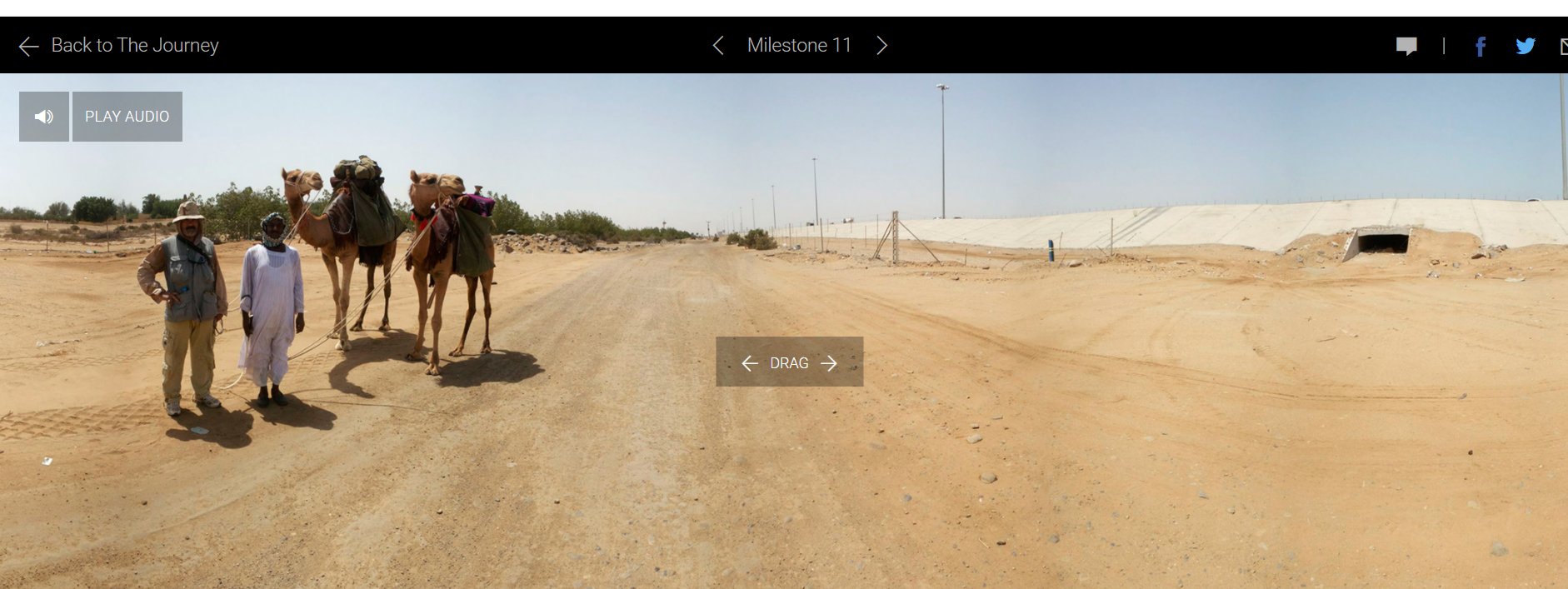
In this location there were no encounters as unsuspecting people sped by on the highway unaware of the monumental journey taking place just feet away from them.
Milestone 63 Near Varanasi, Uttar Pradesh, India
This is now day 2160 and they have traveled 6200 miles and are in a world far different than their beginnings. The glances section depicts a calm river with the sounds that surround them such as children. In the encounters we meet Phoolwanti Samayamu who is guiding her cows to drinking water.
Her story of the struggles that she endures living in the region under poverty touches me greatly. It seems as though the reduction in rain has greatly affected her lively hood causes much distress upon her family.
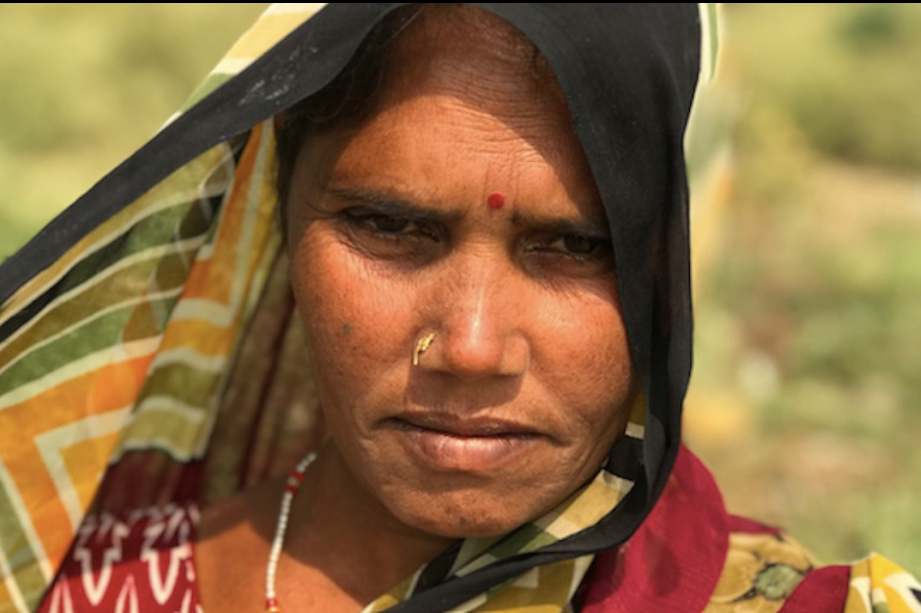
This would be a great to get students involved in exploring changing weather patterns and how global warming can greatly impact not only the landscape but people’s lives as well. The great droughts in India have impacted so many in everyday life and I think we need to encourage students to learn more about sustainable goals for their future. Water is often the key to sustaining life and is a vital point of many industries without water we would struggle.
Throughout the journey it is clear that Paul and the group has meet many different people across many different landscapes. I only explored a very small section of his great mission and can only begin to imagine what he has learned along the way. He has traveled through many different regions and cultures seeing many different struggles and successes. He has seen firsthand how society varies from location to location and explored populated regions that have modern technologies and remote villages that are barely surviving. I am thankful to experience this and can see how vital this could be in future lesson plans to challenge my students to think outside of New Jersey and their comforts.
Educational Blog Post 2: Collaboration
by Cristell Ramirez
In today’s education system, collaboration is an important part of it. Teachers and professors collaborate all throughout the day and there are changes being made constantly. Back in the day, teachers would be making their lesson plans by hand and then it went to making their lesson plans on the computer and printing them out. Worksheets for students were being printed out daily and now worksheets are being added into Google Classroom for kids to do right from the computer/tablet. Every single day teachers do work together to figure out this time we live in and they collaborate in order to keep up with this technology and make sure everything is up to date.

Teachers can always share what they are using or doing in their classrooms, whether it be at their work place or even online. Since there are new tools or new worksheets being found out every single day teachers need to communicate with one another. When a teacher is involved with the student’s academic life, the student can achieve more things academically. When a student is engaged in the lesson being taught they learn more because they feel like they are understanding more and they are having fun with what they are attempting to learn. So when a teacher finds a good method of teaching its great that they spread it and let other teachers know so they can use it also. The education system works wonderful when there is collaboration between everyone.
HyperDocs: A new hands on approach to learning

What is Hyperdocs?
Hyperdocs are fun and engaging digital lesson plans designed to provide students with all their content and tools for learning in one organized space. Hyperdocs allows students to access content before receiving direct instruction. Students can then apply their learning using the 4 C’s: critical thinking, communication, collaboration, and creativity.
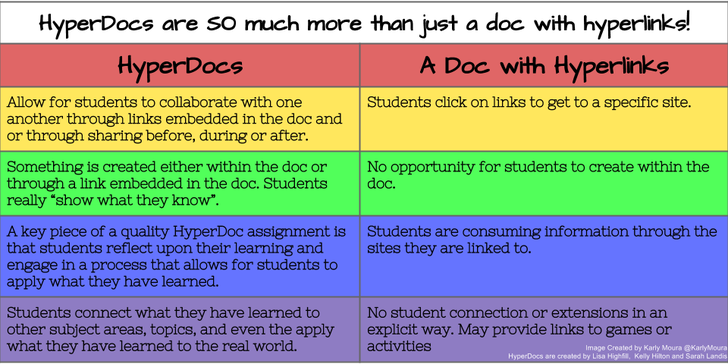
Why Hyperdocs?
Hyperdocs have replaced traditional boring ways of teaching. Learners are now more engaged in fun interactive hands on learning. Here is a video to help explain why you would want to use Hyperdocs.
When creating a Hyperdoc, make sure to follow this basic template. Many HyperDocs follow this basic template that takes students through six steps of a lesson:
- Engage: Hook your students, get them engaged, and activate prior knowledge. You might use a fun video, interactive website, or audio recording.
- Explore: Link resources, such as videos or articles, for students to explore more information.
- Explain: Clarify the learning objective for your students. This is where you could teach a whole group lesson with direct instruction, or add additional resources for students to explore.
- Apply: What do you want students to create to demonstrate their learning? Give instructions for the assignment.
- Share: Provide a way for students to share their work and receive feedback.
- Reflect: Pause for reflection (whole class, think-pair-share, etc.) or link them to a digital way to share their thoughts.
- Extend: This portion is great for early finishers. Provide extra activities, additional online resources, or challenge them with an extension assignment to extend their thinking.

There are many different sites available online that offer free templates and ideas to help you get started with creating your own Hyperdocs.
In my own exploration of Hyperdocs, I found one about Pokemon Go which I feel would be super fun and engaging for kids in upper elementary age level through middle school. Being a Pokemon fanatic myself I really enjoyed this hyperdoc. I’ve enclosed a copy of the link so you can check it out for yourself.

I hope you enjoyed this weeks blogpost.
Bayta O.
Blog Post 10
Out of Eden Walk!
The first destination I chose from the walk is the Holy Lands! The Holy Lands consisted of Saudi Arabia, Jordan, West Bank, and Israel. The Holy Lands seeded the three great monotheistic faiths. On April 28 2013, there was a border crossing of Saudi Arabia. It consisted of a converted car carrier hauling sheep and camels.

The second destination I chose from the walk is Silk Road! On December 24, 2015, there was the border crossing on Kazakhstan. The Caspian Shore gave way to the wind-raked expanse of western Kazakhstan’s steppes. They crossed at night and the crossing consisted of 3200 miles. This crossing was a significant one and was a milestone.
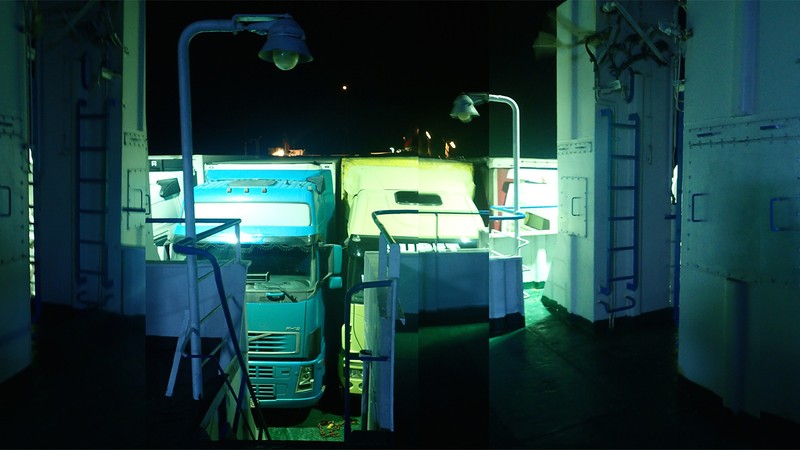
The third and final destination I chose from the walk is the Riverlands! This consisted of Pakistan and India. It lasted from February 2018-October 2021. The walk traversed an emerging center of global power by navigating through a maze of waterways across fertile South Asia. The Out of Eden’s Walk’s global trail eventually meandered down to the river-fed plains of South Asia.
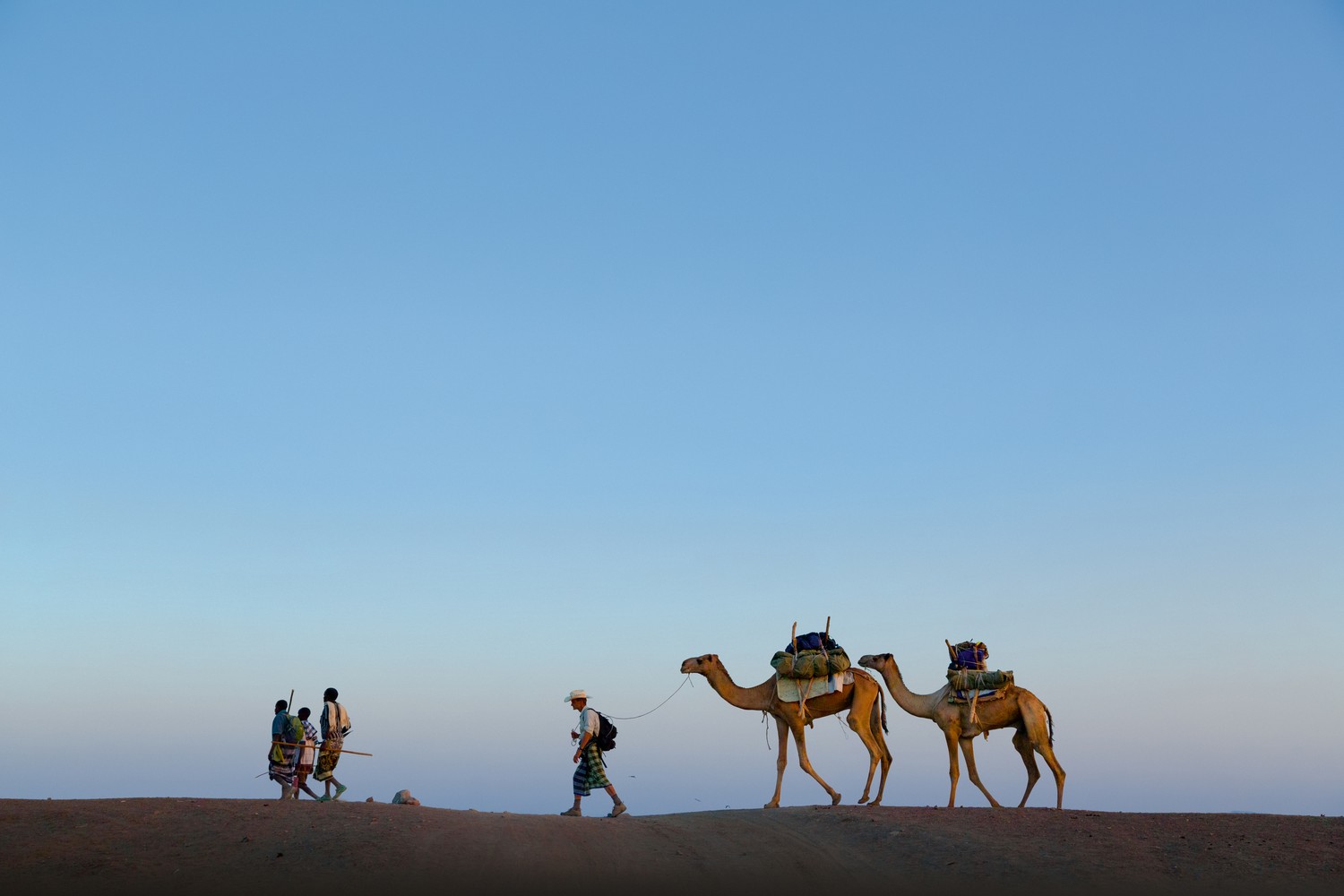
You can explore the Out of Eden Walk like I did here!
I hope you enjoyed! Thanks for viewing 🙂
National Geographic: Out of Eden Walk
The Out Of Eden Walk is Paul Salopek’s experiment in slow journalism. He is taking a 24,000-mile trek from Ethiopia to the most southern tip of South America to walk the pathways that follow the migration of humans from Africa in the Stone Age. In this trek, he is interviewing “villagers, nomads, traders, farmers, soldiers, and artists who rarely make the news” and documenting to create a global record of human life. Paul Salopek gives voices to the people who inhabit the locations he travels through by uncovering major stories “from climate change to technological innovation, from mass migration to cultural survival” and brings the world to an age of rediscovering.
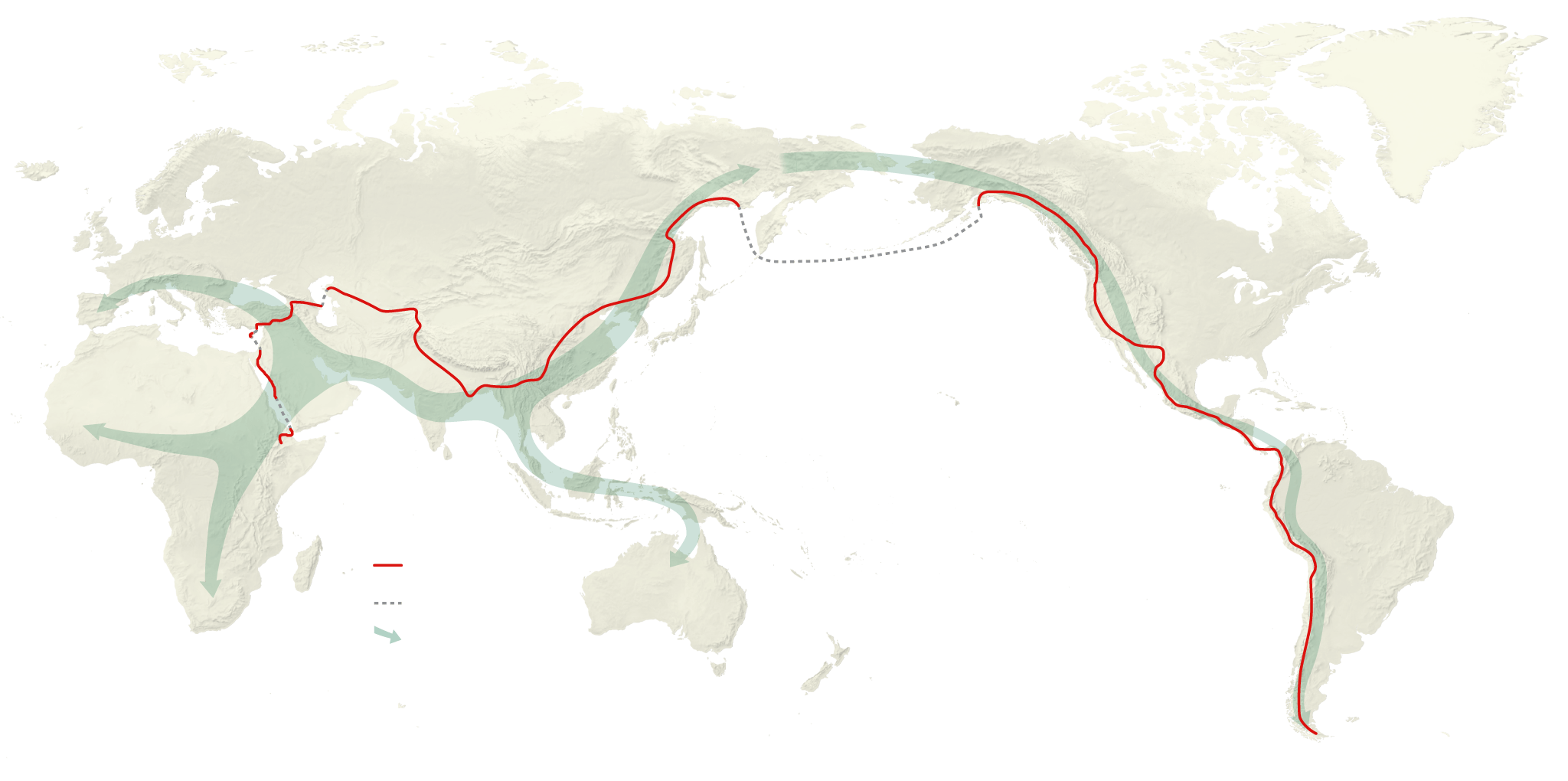
Chapter 1: Out of Africa
Chapter 1 starts off the journey in January of 2013. At every hundred miles mark, the landscape is recorded and a person of the land is interviewed.
Milestone 1 is in Herto Bouri. He interviews Idoli Mohamed, a 40 year old pastoralist. He asks them three questions: Who are you, where do you come from, and where are you going.
He laments on his life as a pastoralist, and tells that is not a good life to live. He wishes his sons to go to school and study and not become a pastoralist like him. When asked where he comes from, he says he doesn’t know. it is said his people come from Tadjoura, in Dijibouti in the north, but it’s hearsay. He more confidently says that “if Adam and Eve were human, then I don’t believe any other story. All people, black or white, we all come from them.”
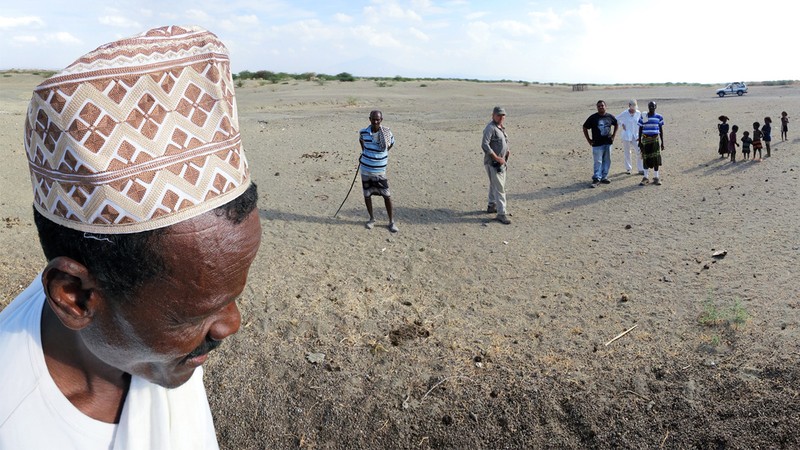
Chapter 4: The Silk Roads
Milestone 34 is in Aktau, Kazakhstan in May 2016. here he asks the same questions to Abad Urisbayev – a 34 year old member of regional parliament. He also includes Abad’s 16 year old sister, Kamila Zhangirkhan, and Abad’s 18 month old son, Abzal.
Abad gives his full name to Salopek when asked who he is. He tells that he is from here and that he is going to serve his nation. And that later that day he would go cycling.
Kamila is asked who she is, and responds by saying she is a human being and a student. She tells that she was born here and is going to study in Almaty as she wants to work in finance.
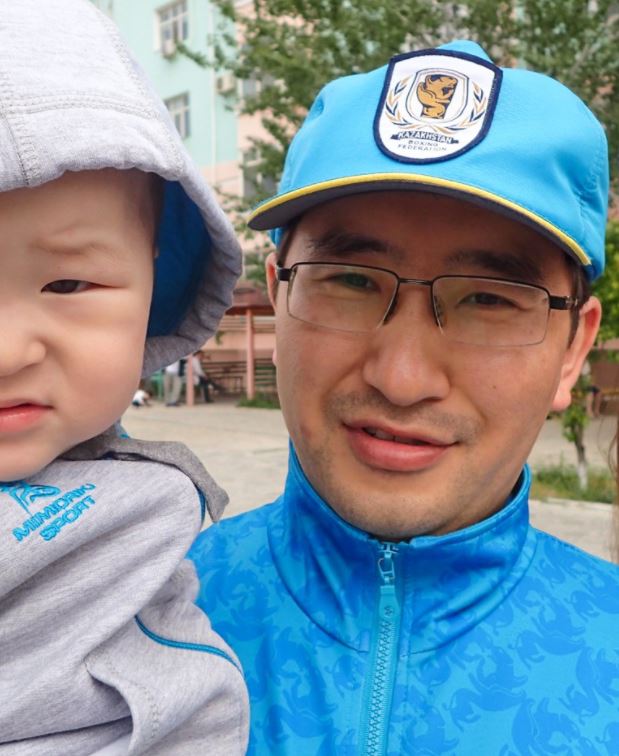
Chapter 6: Middle Kingdom
Salopek had to pause the walk due to COVID-19 restrictions. The walk was paused in Mandalay, Myanmar as Asian borders closed. The walk became impossible due to a coup that helped Myanmar’s army seize power. The trek restarted as close to the Myanmar border as legally possible, but this left a gap of 251 miles.
The most recent Milestone is Milestone 74. This is in Yusan, Yunnan, China in October 2021. He interviewed Jiang Ji Bing – a 39 year old part-time flower farmer. He explains he is from Tengchong. When asked who he is, he explains that he plants flowers for medicinal purposes, mostly Chrysanthemums of longevity as well as for fertilizer. But he explains business isn’t doing too well due to COVID and closed borders. His part time job is done on the side because of the effects of COVID but it doesn’t pay much anymore. When asked where he is going, he explains that once the flowers are picked, he goes home.

Blog Post 1: Educational Technology
by Cristell Ramirez
Technology has become such a big part of education. In the time we live in today, it has become the biggest part of our world of education. In school, we use it every single day, whether it is to watch videos or write our papers virtually it has become one of the biggest tools we use.

Online learning has become the most important parts of our world since 2020. For months students all around the world were practically forced to work from home online. All our work was being done from home and behind a screen. Technology basically surrounded our entire world and it currently is. It is not going anywhere.
Educational technology is a tool where you use any type of technology to help with the process of learning. In this time, there are thousands of tools that can be used to help students with their learning and make it easier for them to understand the subject easily. There are different methods of teaching and each week, teachers share their tools that have made their students more comfortable in their learning environment.
My Future Classroom
by Cristell Ramirez
For this blog post, I went on the website, www.we.org to learn about some practices I am able to adapt into my future classroom. WE charity is an internationally known charity/educational partner in which it allows students to have the tools in order to create transformative social changes. This organization works with communities in Africa, Asia, and Latin America to implement WE villages where the 5 pillar international development model in order to achieve sustainable change. If we are going by numbers, one million people have been empowered to lift themselves out of poverty, two hundred thousand children have access to education, over forty million hours of volunteer has been logged in WE schools and so much more. A little more about the WE movement from the creators themselves.
Information from www.we.org
I decided to look at the WE teachers diversity and inclusion module to use in the future for my classroom. I learned different ways of making kids feel included in my classroom. Making sure I follow the different practices for the kids to feel safe and in a place where they can express themselves whether it be gender, race, ethnicity, or sexuality. School should be a safe place for kids to express themselves freely without judgement.

Being able to include every single one of students no matter what they identify as is a big deal to me. I am excited to be a teacher where I can talk about different cultures and their practices. Growing up, I never really had these things and I would feel left out and I don’t want one of my students to feel like that.
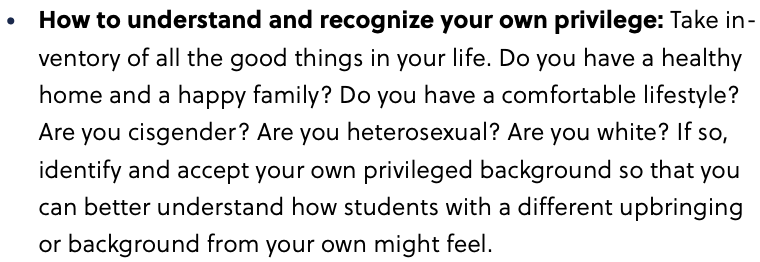
I want to know and be in the know of everything going on in my classroom. I want to make the kids feel like they can trust me enough to have conversations about these different topics. And with this I have to understand my own background to understand theirs.
There are so many more modules to look at but this is the one I found the most interesting. There is so much more to learn in this specific module and it even comes with different resources and activities to be incorporated into lesson plans. I will be trying my best to follow through with what I have learned in these modules.
Stay in My Heart

Stay in My Heart is a new Youtube Turkish Drama Series. The first episode of the series tells the story of a Turkish family struggling to make ends meet because of the father’s addiction to gambling and alcohol. I chose this show because I felt it was something different, and I have never watched a Turkish show and wanted to learn more about the culture.
The show had many cultural similarities, similar to my own culture. I found that the character’s wardrobe, extracurricular activities, and food were no different than the type we would have in the United States. The architecture of the buildings was also like the buildings seen in low-income areas. The roads were also like the roads we usually drive on. People in Turkey also drove the same cars, walked, and rode bikes. They gambled, danced, drank, and partied like many adults, young and old.
I found many cultural diversities in the show, beginning with the music. Besides speaking a completely different language, the music was very different from what we usually hear on our radios in the United States. The music is very rhythmic in the wedding scene, often using violins and drums. Another cultural difference I noticed was with the architecture. Almost all the buildings in the locations had bars over the windows. The sidewalks were also elevated higher off the ground, which we won’t find around where I live.
One of the most significant cultural differences that I noticed was the roles of the family members. It may not have seemed as much of a culture shock if we were still living back in the 1950s, but we are not. Many countries still have a culture where “a women’s place is in the kitchen.” It was evident from the show that it took on a patriarchal theme where women were not equally valued. The same went for children as well. The fact that the daughter could not go to school and the brother had to help work at the market shows that women and children are in a class all their own. In the dialogue between the characters, you can see how respectable they are towards one another
The weather in the show was very similar to our falls. Many of the trees had leaves falling from them, and many of the characters wore sweaters and jackets. They enjoyed sports, gambling, dancing, singing, and listening to music which is similar in many cultures, including my own.
Stay in my heart is a great drama series for people looking to view current Turkish culture. Because the culture is very similar to our own culture, we can relate better to what is happening in the show. You can see for yourself by clicking this link.
I hope you enjoyed this blog post. Until next time stay tuned.
Bayta Owens
We-Well Being
Today in my research of we-virtual learning I stumbled across something that peculiarly caught my attention. It was a program that Introduces students to the concept of mental health literacy explored how mental health literacy plays a role in our well-being. We can share knowledge and curiosity through discussion and collaboration with others to understand the daily struggles that most go through without ever understanding colleagues or students’ lived events.

How do we investigate to learn? the study I’m going to share was a lesson that targets a high school classroom with students in grades from 9-12. the program starts by letting the class know that they’ll be talking about mental health and the concept of mental health. An overall understanding of mental health, why it’s important, factors that can promote mental health,
and factors that can lead to mental health problems or social disorders.

Why do you personally think mental health literacy is important? Collectively, this research study has come up with a few ways to practice mental health literacy. the one that stuck out was based on students’ responses. this will be a yearly progress chart to Keep the chart paper in plain view to reference as a class throughout the year and remind students of the ways they have identified to practice mental health literacy throughout the year.
Over the years I have grown close with many teachers and professors that had made a major impact on my life and my character as an adult. The majority of skills a student will learn will be in high school. After spending years of our lives in a classroom I believe that mental health literacy should be a social experiment introduced in a classroom setting. I believe that this could make a difference as a whole if teachers and students both collectively practice well-being for a greater understanding. Thank you, I hope you enjoyed the read.
Blog post 9
In the information that was informed of the website www.we.org in the WE-teachers section, I was thoroughly surprised at what was available to help my future classroom. The information that I found most interesting and useful for my future classroom would be the module on Youth Violence Module. I found this information to stand out more than the rest due to its in-depth situations and how to handle them. The module went through how to handle situations, what to look out for, how to justify what you are doing and what courses of action should be taken. Such as how to make the student feel, what sources to reach out to in order to get the student adequately handled. The facts and statistics of the Youth violence situation are truly remarkable and quite honestly saddening. It would be useful to me in my future classroom because Youth Violence is something that truly bothers me within and I do not stand for it, I do not want that brought into my teaching environment.
Recent Comments